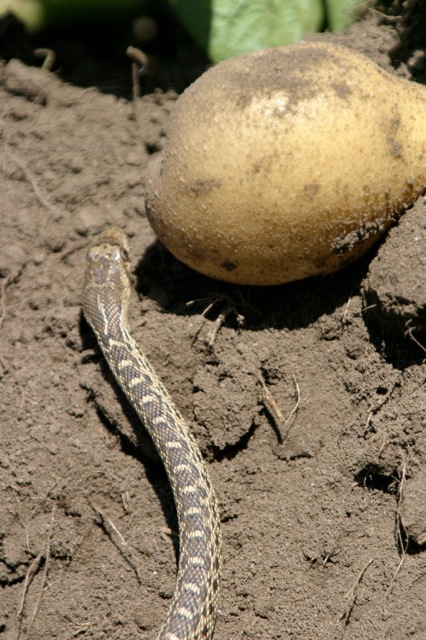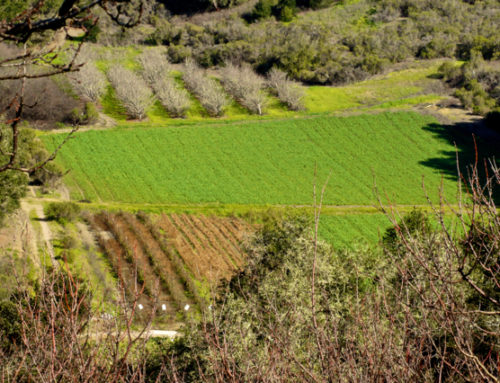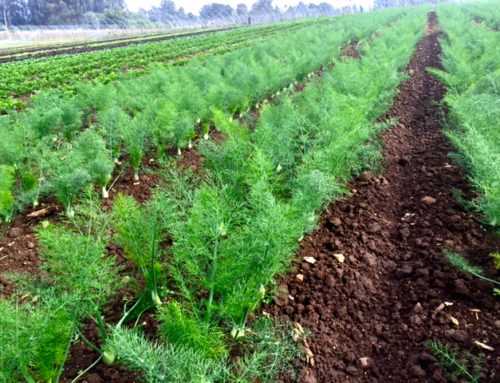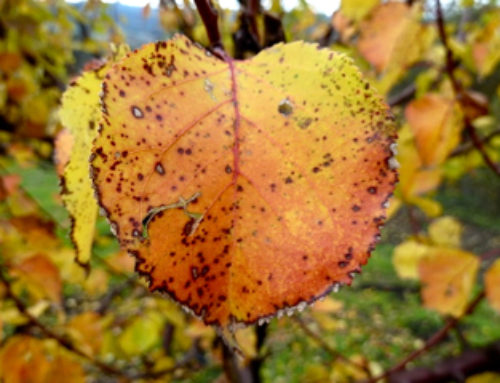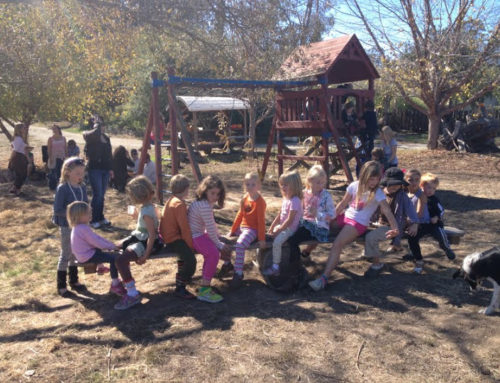“To plant a seed and believe that it will germinate, out-compete weeds, bloom, set fruit, and be harvested and sold at a fair price is a great leap of faith.”
– Organic farming pioneers, Denesse Willey of T&D Willey Farms in Fresno,CA
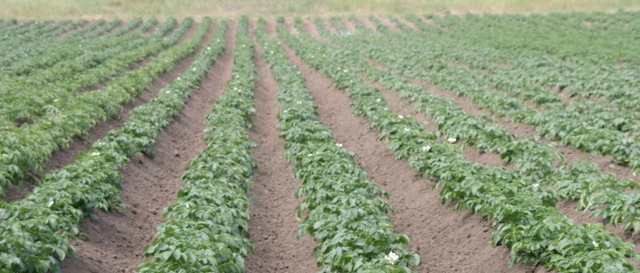
For some it may be a trivial matter but for farmers and gardeners here in the northern hemisphere Spring is around the corner. Our seed orders are arriving and we are once again committed to engage in the seasonal ritual of planting and sowing, taking that great leap of faith that these seeds, these tiny treasures of nature, will germinate, compete and succeed to yield an abundant nourishing harvest. Of all the seeds we plant, among my favorite ones are the potatoes.
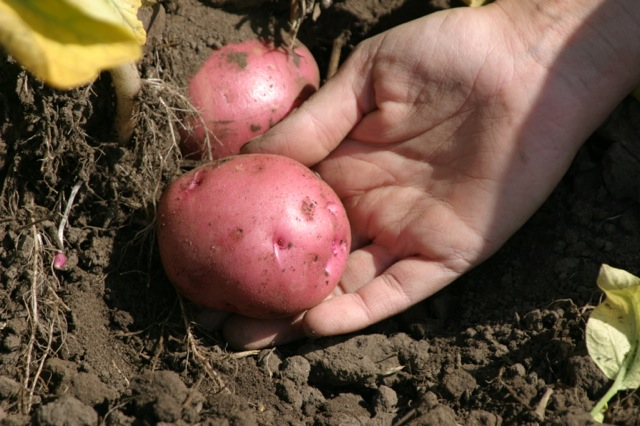
Our seed potatoes arrived last week, stacked on a wooden pallet, shipped directly from a seed farm (Rockey Farms) in Colorado via a semi-truck making deliveries to organic farmers up and down the Central Coast. Unlike most of our other seeds which arrive in the mail, a few pounds at a time, we have to order a few thousand pounds of certified potato seed to plant out 2 – 3 acres.
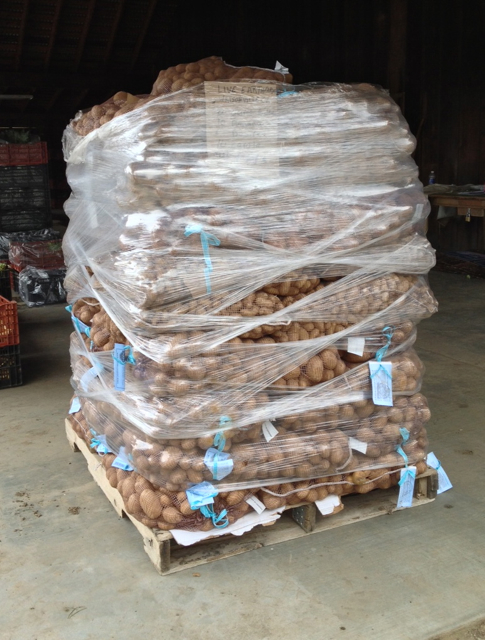
Although potatoes grow underground they are not really roots. They are the swollen ends of skinny underground stems also known as tubers. The potato tubers have nodes or eyes from which the new growth begins. The new stems growing from each eye are called sprouts. Sprouts grow from the tuber after a period of dormancy.
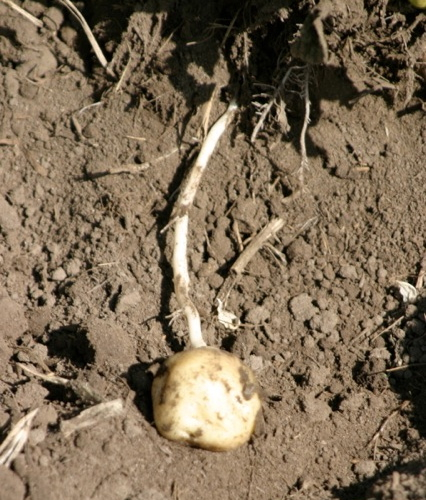
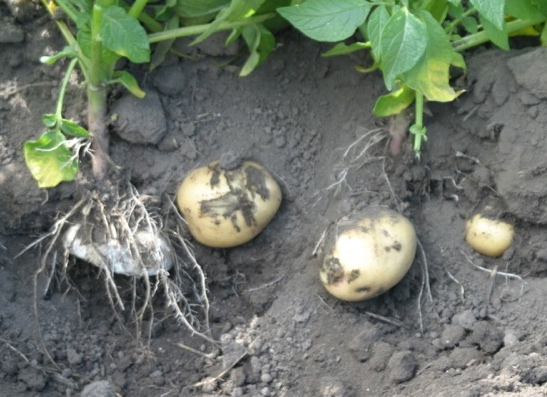
Since we are almost ready to plant, we encourage the seed potatoes we received last week to break their dormancy so that sprouts will grow when they get planted. These sprouts give rise to the plant stems, and in order to stimulate the formation of new tubers about a quarter to a third of the plant has to be covered with soil, also known as ‘hilling up”. Under favorable growing conditions, 1 pound of planted seed potatoes will yield about 10 pounds of harvestable potatoes.
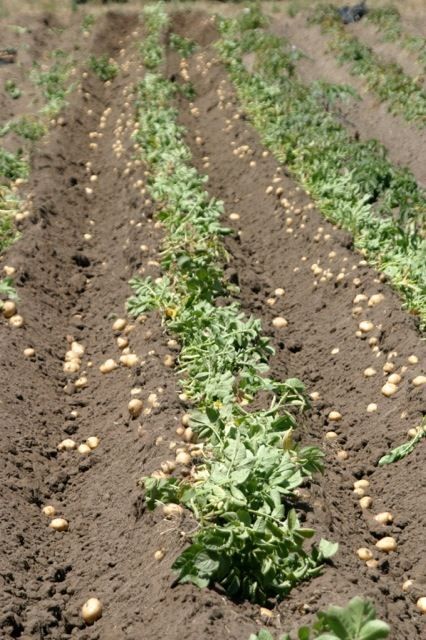
Potatoes are adapted to grow in many different climates throughout the world. From their place of origin in the Andes mountains of South America all the way to much warmer coastal areas such as exist on islands of the South Pacific. Although potatoes grow better in cooler climates, during my years as a Peace Corps volunteer (1985-87) I worked with farmers on the island nation of Western Samoa who successfully grew selected varieties adapted to their more tropical farming conditions. Here along the Central Coast, not too long ago, farmers used to grow potatoes in larger quantities before the more lucrative berries took over.
We’ll be growing 5 different varieties this year. German Butterballs, a round to oblong tuber with lightly netted skin with deep yellow flesh. Slightly mealy, this variety is superb for everything – frying, baking, mashing, soups – you name it. Russian Bananas, probably best known of the fingerlings, are the only ones of this type we’ll be growing this year. It matures early and I love them steamed or roasted. Carola, with a beautiful yellow color has a creamy texture and exquisite flavor – great steamed, boiled, baked, or fried. Desiree, has oval tubers with beautiful rosy skin and creamy yellow flesh. Excellent for salads, boiling, or mashing. Finally our traditional Yellow Finn with it’s dark yellow flesh is moist with a little mealiness, excellent for baking, mashing, or frying.
